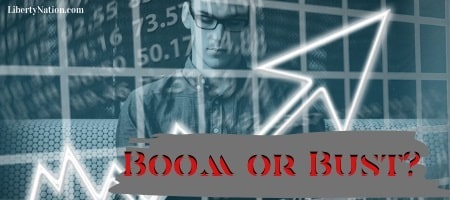Well, that was a fun 11-year bull run while it lasted. It looks like we have come back down to reality and realized that economic expansions are not perpetual motion machines that produce eternal prosperity. The market crash continued on Thursday, wiping out hundreds of billions of dollars all because of a mysterious illness that started in bats and transferred to humans across the globe. Have we bottomed out, or is the worst yet to come? Like the never-ending Star Wars saga, you can expect more sequels, spinoffs, and reboots to Black Monday.
Bears in a China Shop
The New York Stock Exchange was immediately swallowed whole by an ocean of red ink when the opening bell rang on Thursday. The pre-market movements already signaled a steep crash once 9:30 a.m. hit, but the plunge in equities amplified when investors – professional and retail – pushed the big red sell button. Unlike the recent collapses over the last month, there was no dead cat bounce.
The Dow Jones Industrial Averages cratered 1,696.31 points, or 7.2%, to 21,856.91. The S&P 500 plummeted 7.47% to 2,536.07, and the Nasdaq Composite Index fell 6.88% to 7,402.82. Because the leading stock indexes declined by 7%, the circuit breaker was triggered for the second time this week, which halted trading for 15 minutes. It did give traders a moment to breathe and collect their thoughts, but the only conclusion they ostensibly came up with is to jump off the sinking ship.
This summarizes just how much Pepto Bismol you will need: About 73 stocks on the NYSE fell for every one advancer.
Elsewhere in the stock market, West Texas Intermediate (WTI) crude oil fell 6% to about $31 per barrel, and Brent crude slumped 7% to roughly $33. The safe-haven assets were bleeding profusely, too: the benchmark U.S. ten-year Treasury note slipped to 0.68%, gold crashed $50 to under $1,600, silver shed 5% to below $16, and the U.S. dollar fell 0.8% against the Japanese yen.
If you think there was a place to flee to, then you would be wrong. The Nikkei, the Hang Sang, and ASX 200 recorded triple-digit losses overnight, and the major European markets tumbled more than 9%.
It looks like there is no end in sight. The Cboe Volatility Index (VIX), also known as the fear gauge, surged to 68.61 in the morning trading session. The last time it was this high was at the height of the economic collapse more than a decade ago. Plus, the iPath Series B S&P 500 VIX Short-Term Futures ETN (VXX) spiked 18%, and the VelocityShares Daily 2x VIX Short Term ETN popped 40%.
At least the Coronavirus plays are in the green!
Is this a buying opportunity? Are investors catching falling knives? Or are they waiting for the bottom?
Dead Cats, Falling Knives, and Buy the Dip
All the 1,000-point swings should be prevalent until at least the Federal Reserve’s next Federal Open Market Committee (FOMC) policy meeting on March 18. It is widely anticipated that the U.S. central bank will cut interest rates again after recently imposing an emergency cut of 50 basis points. Although rate cuts usually take about three to five months to seep into the market fully, traders will likely price in the monetary easing.
 If the meltdown persists, and the leading stock indexes wipe away their enormous gains of the last three years, you could see some of the crème de la crème of stocks at deep discounts. All the FAANG tickers are trading near 52-week lows, Disney fell to a four-year low, Halliburton is slumping near a record-low, and the major banks (Goldman Sachs, Morgan Stanley, and JPMorgan Chase, for example) are far from their all-time highs.
If the meltdown persists, and the leading stock indexes wipe away their enormous gains of the last three years, you could see some of the crème de la crème of stocks at deep discounts. All the FAANG tickers are trading near 52-week lows, Disney fell to a four-year low, Halliburton is slumping near a record-low, and the major banks (Goldman Sachs, Morgan Stanley, and JPMorgan Chase, for example) are far from their all-time highs.
The federal government’s proposal to institute a 0% payroll tax cut for the rest of 2020, wage relief, and paid sick leave may not be enough to rescue this volatile market right now. It might offer a dead cat bounce if it is passed by Congress and signed by President Donald Trump, but until a vaccine is released into the market or the Coronavirus is slaughtered by spring and summer temperatures, we are all going to be seeing red for a while.
Is This the Real Crash?
What is frightening about this market crash is that the United States is not even in a full-blown recession yet. The GDP will likely take a hit in the first quarter, but all the metrics suggest the U.S. economy is still reasonably healthy: Initial jobless claims are down, small business optimism remains high, and mortgage applications are soaring. Perhaps this will change the more widespread COVID-19 becomes in the country. What happens when the Fed-manipulated bubbles of the 11-year bull run burst? The Eccles Building is firing all its ammunition to contain the economic fallout from the Coronavirus, meaning it will be out of bullets by the time the real financial crisis hits the U.S. What a time to be liquid!
~
Read more from Andrew Moran.



